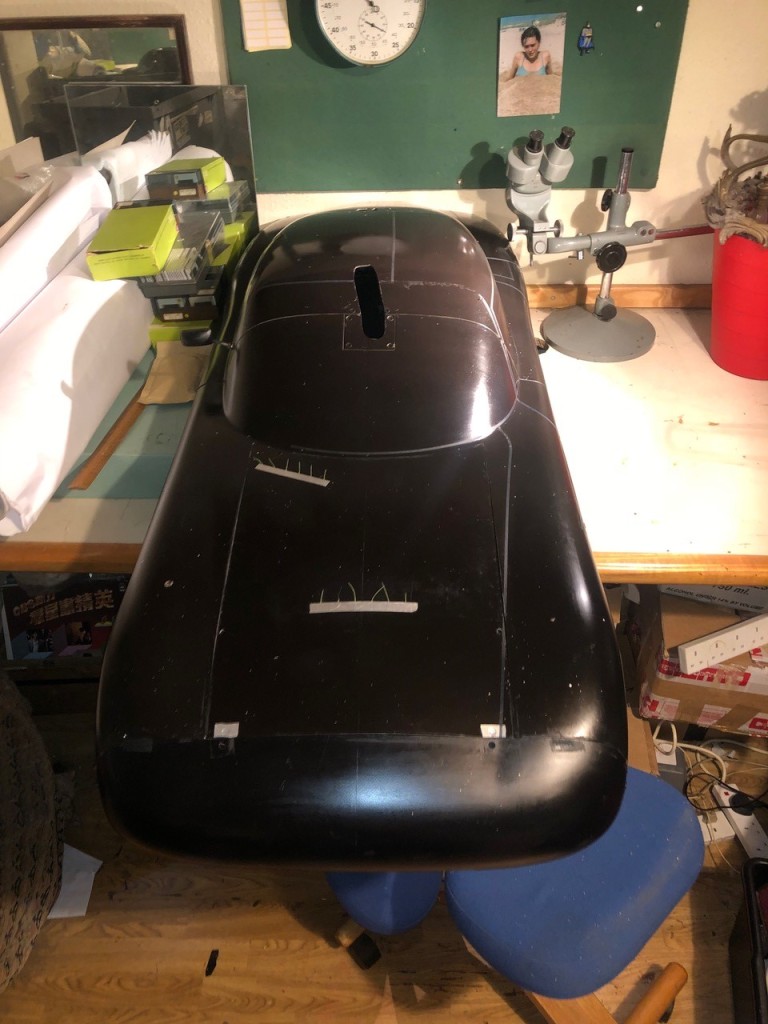During the long, inevitable death throes of the late lamented Bristol Cars Ltd, the Heritage Trust assembled a crack team, and bid for as many Bristol related artefacts as we could handle. When we turned up at the defunct Windlesham HQ to collect our treasures, the sad remains of sundry products and projects littered the grounds, around a gigantic, “Masters of the Universe” building, the former British Oxygen Company headquarters. This was built of curved glass corridors, described as forming the shape of a “huge oxygen molecule”; this is probably visible from space (try Google Earth)!
Pedants (in particular my old Chemistry teacher) may point out that there is some, er, elementary misunderstanding here. An oxygen atom is, of course, surrounded by 8 electrons in 2 rings, 2 inner and 6 outer – not the 4 and 4 seen here. And an Oxygen molecule, as any fule kno, is of course O2, two atoms together. Those better informed, or less superstitious may correct me, but was it written in the stars that such a conceptual error boded ill for the enterprise within the structure? Just saying….

How have the mighty fallen! Moth and corruption had crept into the fabric. Roof leaks had dripped onto random piles of office equipment and algae was creeping across the acres of uncleaned windows. A post-apocalyptic dystopia lay within. Outside, abandoned workshop equipment and electric buses lay where they had died, now only good for brutalist garden sculpture or chicken sheds.
Mercifully, the paper Archives and the wooden bucks were stored in the dry, and after a gigantic whip round with the help of some very kind donors, we managed to salvage all of the bucks, as well as a great deal of the publicity artwork and the prototype models from the 1950s onwards. More news will follow about these.
Several nicely finished scaled-down Fighter models, approximately 4 to 5 feet long, were auctioned off. We didn’t manage to buy one of these but we did bag a box of bits and pieces in black carbon fibre and matte black fibreglass. This was one of the original wind tunnel Fighter models. When I emptied out the box there was a variety of nose cones and side panels and it was clear that different configurations had been assessed. The side panels varied in shape from flat to large, NACA style ducts.

NACA ducts were originally developed in 1945 by the U.S. National Advisory Committee for Aeronautics (NACA), as low drag air inlets. This design is believed to work as the gentle ramp angle and the curved walls create counter-rotating vortices, which deflect the boundary layer away from the inlet and draw in faster moving air, while avoiding the drag and flow separation that can occur with protruding scoop designs. If you see what I mean.
Other cars with prominent NACA ducts include the Ferrari F40, the Dodge Viper, the 1973 Ford Mustang, and Porsche’s 911 GT2 … (pause for all readers to make suitable exhaust sounds, the nearest anybody will get to a track day for now). Back in my shed, one could see that nylon threads had been taped on to the Fighter model to demonstrate wind flow and turbulence.

The various spare panels had small countersunk holes sited to engage with captive nuts. The model was largely disassembled and the countersunk screws were missing. Would these be BA or metric, I wondered? Luckily, one remaining screw turned up. I could just read the legend 10.9 on its head.
Better engineers than me will know that this hieroglyphic indicates high tensile steel, presumably necessary as the panels would be repeatedly removed and refitted during wind tunnel testing.


online, a rainy afternoon was spent assembling different variants. And here’s one of them above and below.





Meanwhile, Bristol’s docklands are a hotbed of design, animation, theatrical prop and model making firms (think Aardman Animations and Dreamworks) and the Heritage Trust is commissioning a further Fighter cast to be made by Plenderleith and Scantlebury, some talented local film prop constructors. A previous big project of theirs was a full sized, working pie machine for Wallace and Gromit.
We will let you know how we get on. Please let us know if you are interested in your very own Fighter model – a suitable trophy for your Mancave perhaps?
Yours in Bristol
Stefan Cembrowicz

Stefan, Greatly appreciated update. Thank you.
LikeLike
the Bristol Wind Tunnel model for purchase, Curious of pricing and such. Any pictures of finished models perhaps? Kind Regards from Canada.. Peter Trought
LikeLike